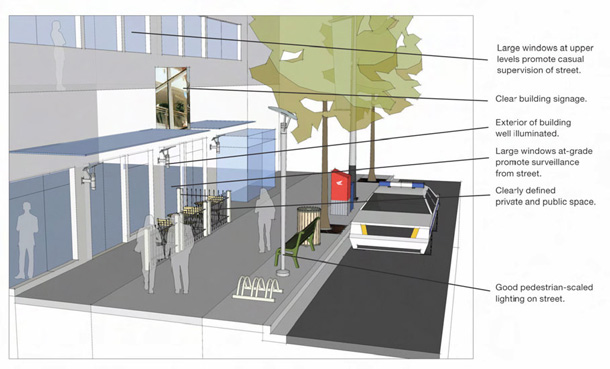
THUNDER BAY – A group of Thunder Bay residents now has the tools to make their neighbourhoods safer after attending a workshop on Crime Prevention Through Environmental Design (CPTED). The seminar was led by Barry Horrobin, Director of Planning & Physical Resources with the Windsor Police Service. The interactive workshop introduced participants to the philosophy and principles of CPTED, and highlighted design standards and assessment tools.
“Participants will never look at the built environment the same ever again,” Horrobin commented.
Lee-Ann Chevrette, Acting Coordinator of the Thunder Bay Crime Prevention Council said the workshop was about taking a proactive approach to crime prevention. “We wanted to give participants the skills required to look critically at different sites, including their neighborhoods, homes, businesses, streets and parks, and to identify and apply measures that will enhance the site’s safety,” Chevrette said. “CPTED is about taking a proactive approach to crime prevention, designing the built environment in a way that will reduce the incidence and fear of crime in our community, and improving quality of life.”
CPTED is a multi-disciplinary approach to deterring criminal behaviours through environmental design. It is a pro-active crime prevention strategy used by planners, architects, police services, security professionals and everyday users of space. CPTED principles of design affect many elements of the built environment, ranging from the small-scale (such as the strategic use of shrubbery and other vegetation) to larger initiatives, such as the form of an entire urban neighbourhood and the number of opportunities for “eyes on the street.”
The RCMP state that CPTED can reduce crime and fear through
- Territoriality – fostering residents’ interaction, vigilance, and control over their neighbourhood
Surveillance – maximizing the ability to spot suspicious people and activities - Activity support – encouraging the intended use of public space by residents
- Hierarchy of space – identifying ownership by delineating private space from public space through real or symbolic boundaries
- Access control/target hardening – using physical barriers, security devices and tamper-resistant materials to restrict entrance
- Environment – a design or location decision that takes into account the surrounding environment and minimizes the use of space by conflicting groups
- Image/Maintenance – ensuring that a building or area is clean, well-maintained, and graffiti-free
What are the main steps in CPTED projects?
- engage the support of residents and other key partners
- identify crime and disorder problems in and around the site
- analyse current or proposed design based on existing crime problems and potential criminal opportunities
- develop preventive or corrective design options
- carry out preferred option
- monitor and evaluate how the implemented option affects crime, resident surveillance, interaction, and territoriality
- disseminate and promote evaluation results
Source: RCMP.
The workshop was open to all residents, but many who attended are also members of the Thunder Bay Police Zone Watch program.
“The CPTED program was a natural fit for the Zone Watch members to participate in,” said Thunder Bay Police Const. Julie Tilbury. “We hope that they will be armed with information that will help develop community level crime prevention initiatives.”












